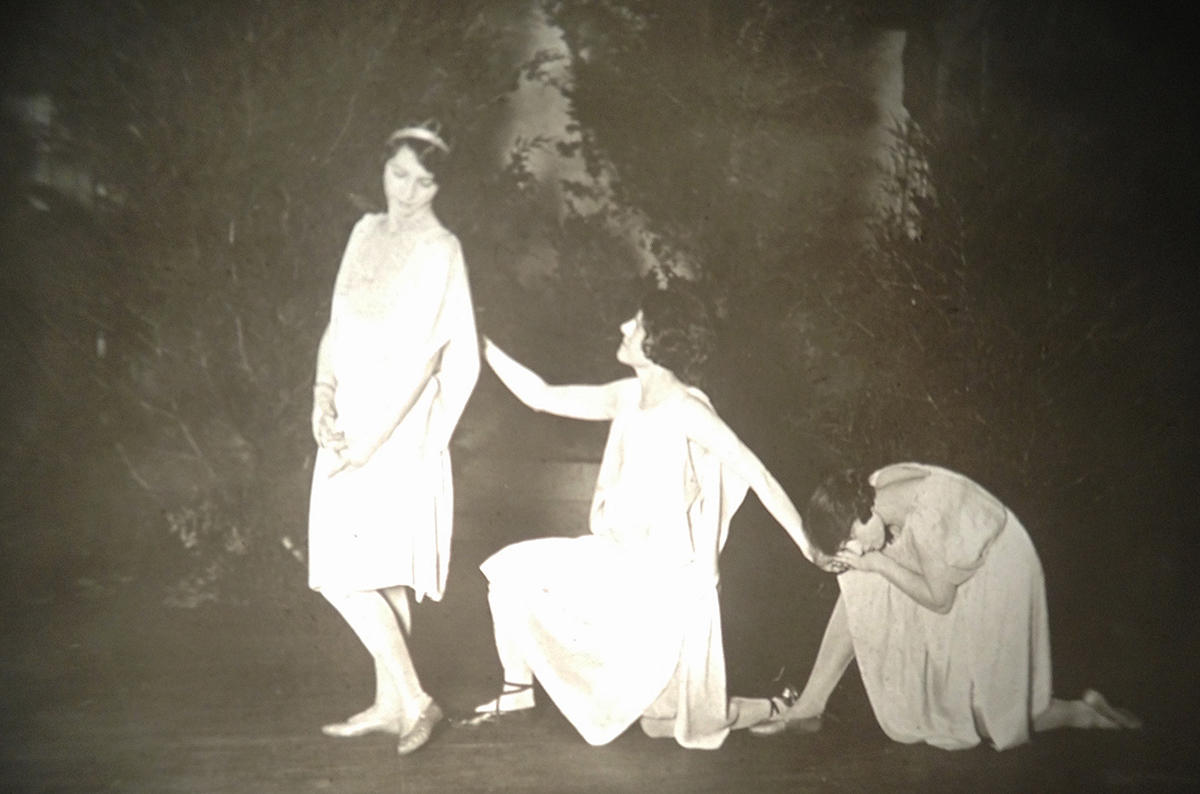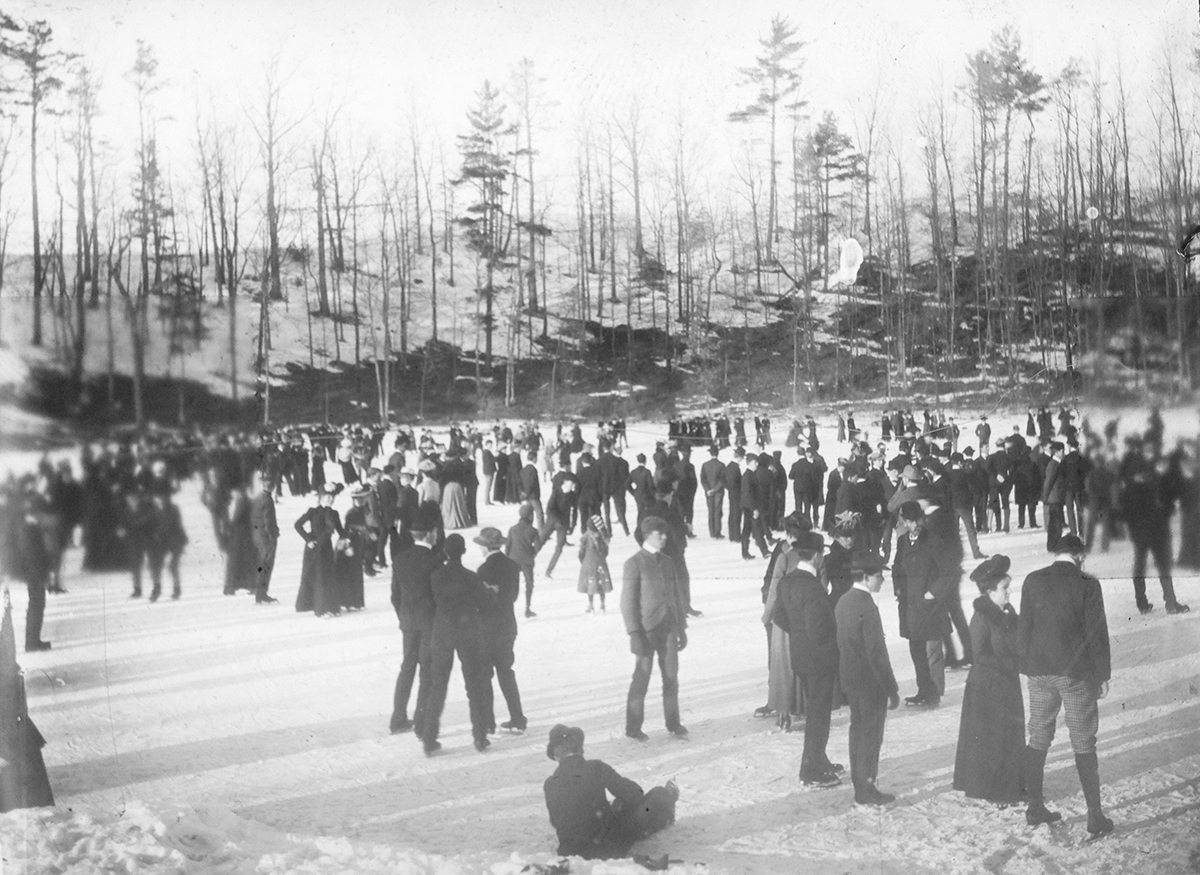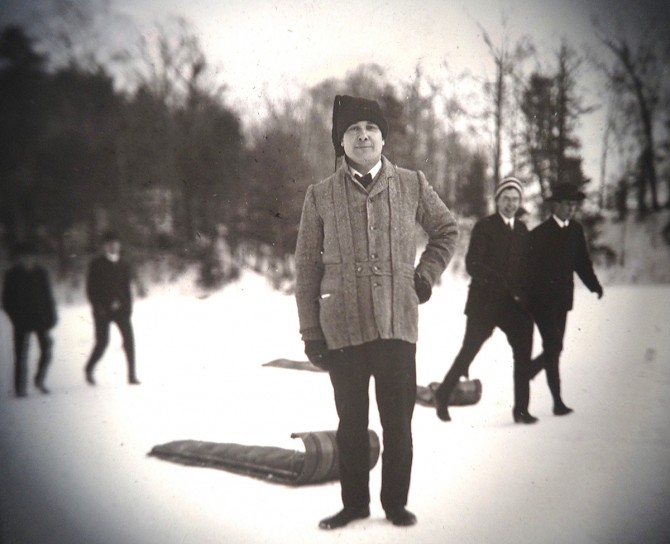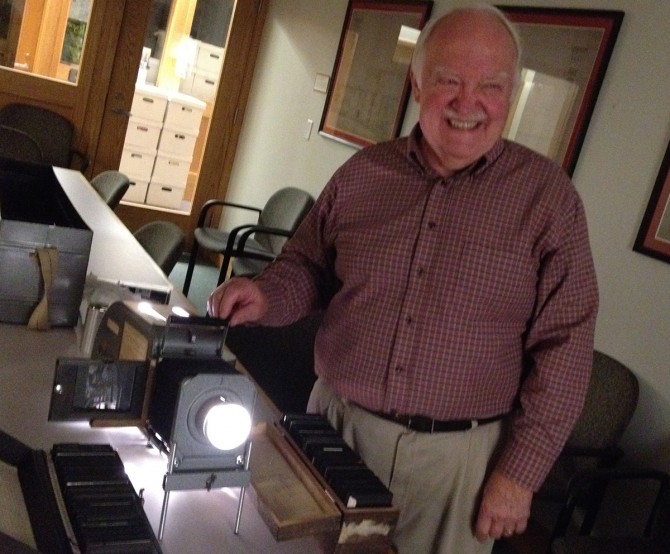Cornell Rewind: Lantern slides illuminated lectures
By Elaine Engst and Blaine Friedlander
“Cornell Rewind” is a series of columns in the Cornell Chronicle to celebrate the university’s sesquicentennial through December 2015. This column will explore the little-known legends and lore, the mythos and memories that devise Cornell’s history.


In the late 19th century, Cornell students enjoyed visually striking class lectures and extracurricular talks thanks to lantern slides – 4-by-3.25-inch projected glass slides, sometimes called magic lantern slides – that illustrated architecture, art, botany, engineering, entomology, geology, physiology, and pretty much all subjects.
Today, Cornell Library’s Division of Rare and Manuscript Collections holds thousands of lantern slides and several lantern slide projectors.
The advent of photography made lantern slides ubiquitous. Professors could easily portray their subject matter visually and make their lectures more interesting.
As early as 1875, the Cornell Register (an official university handbook and course catalog created annually from 1869 to 1932) reported: “In the Chemical Laboratory building a room has been fitted up with apparatus and conveniences for … the making of photographic transparencies, or lantern slides, for scientific illustration. Several thousand of these have been made for the use of the various departments in the University, and duplicates can be furnished to other institutions.” The architecture department also had “a large number of lantern slides … illustrating various remarkable buildings,” and geological sciences held “a collection of several hundred photographic lantern-slides illustrating the lectures in geology, physical geography and paleontology.”
As the PowerPoint of the early 20th century, lantern slides provided a revolution in teaching by making visual learning possible. Professors made slides – by hand – for their lectures, and numerous commercial slides were readily available. In the eighth edition of his book “The Microscope” (1901), professor Simon Henry Gage provided directions for creating lantern slides of photographs of bacterial cultures. Some lantern slides were even hand-colored. To entice students into classes, professors would advertise lantern slide use in course catalogs.
Beyond the classroom
Besides being used in classes, lantern slides were used in major lectures and public talks. In 1908, President Jacob Gould Schurman – trying to strengthen connections between Cornell and the citizens of New York state – organized a series of lectures on modern sanitation.
One sanitation series speaker, Benjamin C. Marsh, secretary of the Committee on Congestion of Population in New York City, spoke before a packed Goldwin Smith Hall lecture room on “Town Planning in Relations to Public Health.”
The Cornell Daily Sun reported “the lecture was well illustrated with lantern slides showing tabulated statistics and diagrams, and also photographs taken by the lecturer during his recent tour of Germany.”
To entertain American troops in World War I, Cornell provided lantern slides by way of the National War Council of the YMCA. The council had invited the university to send slide sets illustrating Cornell’s grounds, buildings and student life. Under the direction of Oscar Diedrich von Engeln, a Cornell geology professor, sets of about 26 pictures were prepared – with 10 in color – accompanied by a written lecture. The professor also prepared a slide series on French cathedrals, contributed by the College of Architecture, and a series of slides on waterfalls, contributed by the Department of Geology.
By the mid-20th century, smaller 35mm film slides replaced the lantern slides, as they were much easier to use, and professors could assemble whole carousels of the lighter slides.
‘Antique technology still works’
Currently, as individual artifacts, lantern slides have relatively little value. The pictures are largely derivative, many copy pages in books, and almost none contain original images. Heavy, bulky, fragile and requiring antiquated projectors, they present serious storage and access difficulties. But lantern slides represent documentation of early teaching and learning, and of the rapid adaptation of new technologies in the early years of the university. Most memorably, they provide a direct glimpse into the classrooms of the past.
Brian Earle ’67, MPS ’71, professor of communication, became the last Cornell professor to use lantern slides in his classes – in 2007. Earle had been teaching a freshman orientation course and invited former university archivist Gould Colman to guest lecture on the university’s history. Colman lugged a lantern projector – and slides – to the class. With an overwhelming student response, Earle incorporated lantern slides into subsequent classes.
“Students couldn’t believe that this antique technology still works,” said Earle. “"For the students, seeing images of Cornell 100 years before they arrived was really fun, and I would get lots of hoots and comments from the peanut gallery in the back of room. It was really interactive.”
Earle’s effusive enthusiasm for lantern slides is evident. “In the Cornell collection, there are wonderful slides of lectures, and back then they were used in just the same way we use PowerPoint today,” he said. “The physical impact of seeing the projector and seeing those detailed, glass slides gave today’s students a sense of history – and that is really important.”
NOTE: If you are interested in helping to identify and catalog the library’s collection of glass lantern slides, please contact university archivist Evan Earle at efe4@cornell.edu.
Media Contact
Get Cornell news delivered right to your inbox.
Subscribe
